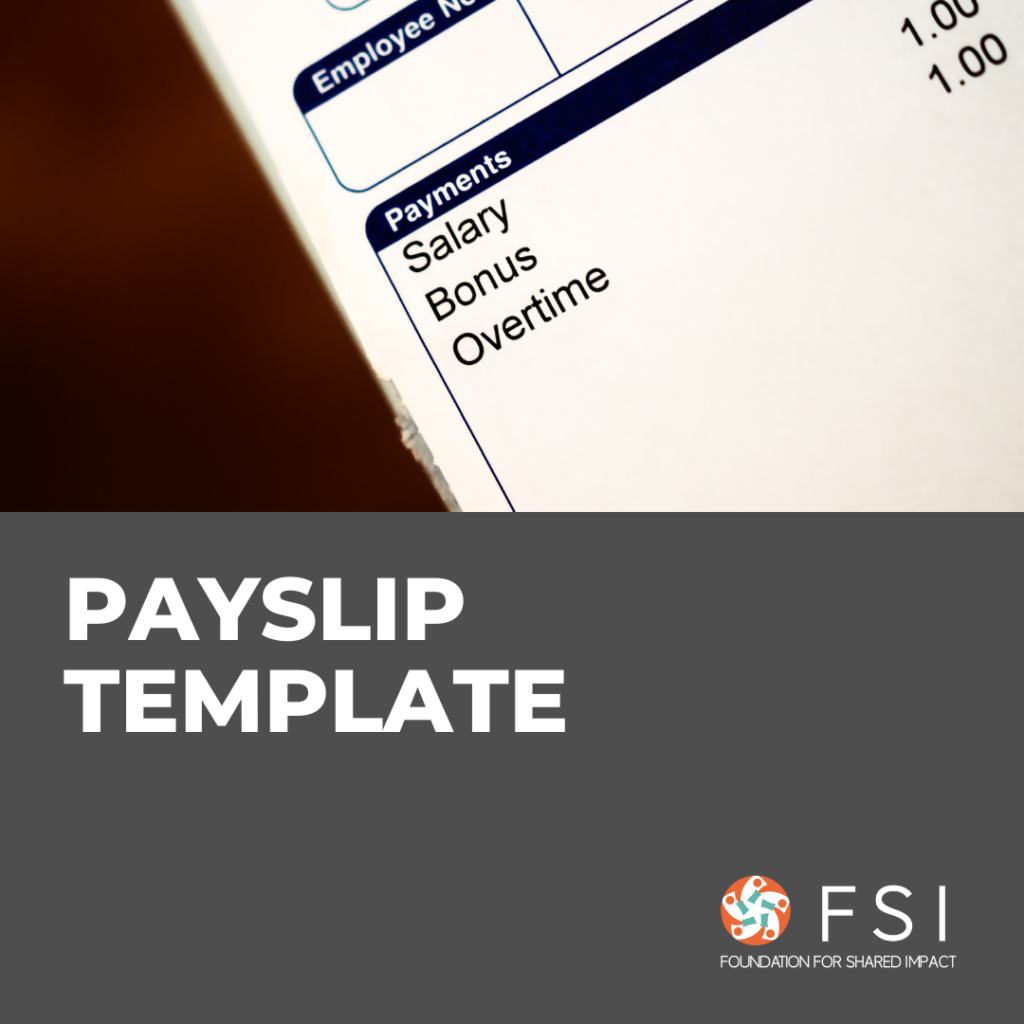Introduction
Instagram is much more than just a platform to share pictures and videos. It is often one of the first platforms your audience would look at to discover you and learn more about your organization. Although there is no single golden rule or a step-by-step manual to guarantee the popularity and success of your Instagram accounts, we would like to introduce you to some fundamental features: hashtags, geotags, and URL links that you should be familiar with to better engage with your audience. These features will help improve your content to be better discovered in users’ search results and to extend your organic reach.
In this guide, we’ll introduce you to some key basic features of Instagram to engage your audience: links, hashtags, and geotags. We also included some extra tips for non-profit organizations and social enterprises, so hope they are helpful!
1. Links in Instagram Bio and Stories
Instagram does not allow accounts to embed clickable external URL links on posts and comments, but here are a few ways and places you can embed such links to funnel your audience to your website or other destinations.
What is it used for
Instagram allows each account to add one URL to appear on the account’s bio, and a link for your Facebook page. Via this “link in bio” function, you can show the most important and relevant link of your organization or content.
How to put a link in your Instagram bio:
- Click “Edit profile” at the top of your profile page
- Enter your destination URL in the “Website” box
- Click “Submit” at the bottom of the page to save your changes
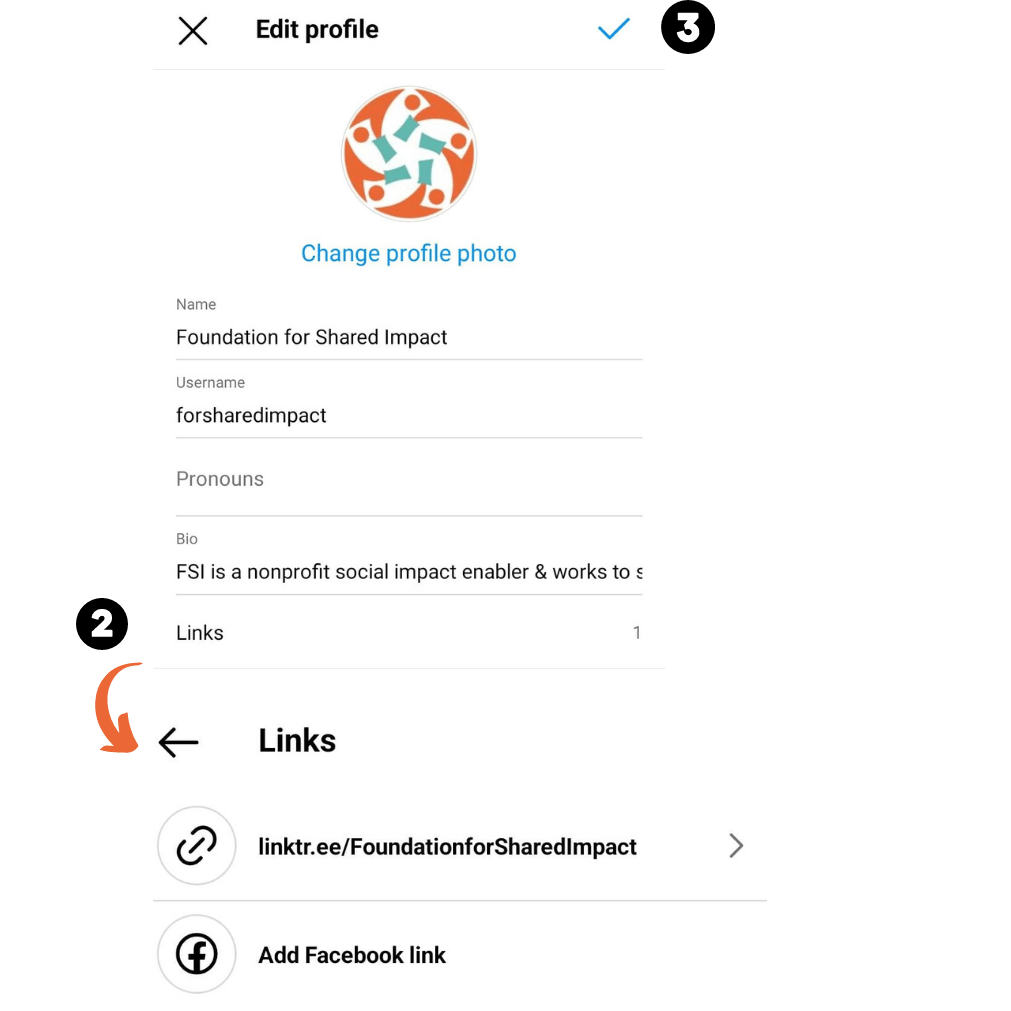
Tips for Using Link in Bio Effectively
- Try Linktree: Given that you can only add one link to your bio, we recommend you use Linktree. Linktree allows you to create a link that leads to a landing page with your addition of multiple sub-links. The paid version allows more customizations to design the landing page with your organization’s logo, color scheme, theme, etc. View a quick tutorial below to learn how to set up your Linktree! More detail on how to set up links on Instagram with other tools is available here: Link Tree for Instagram
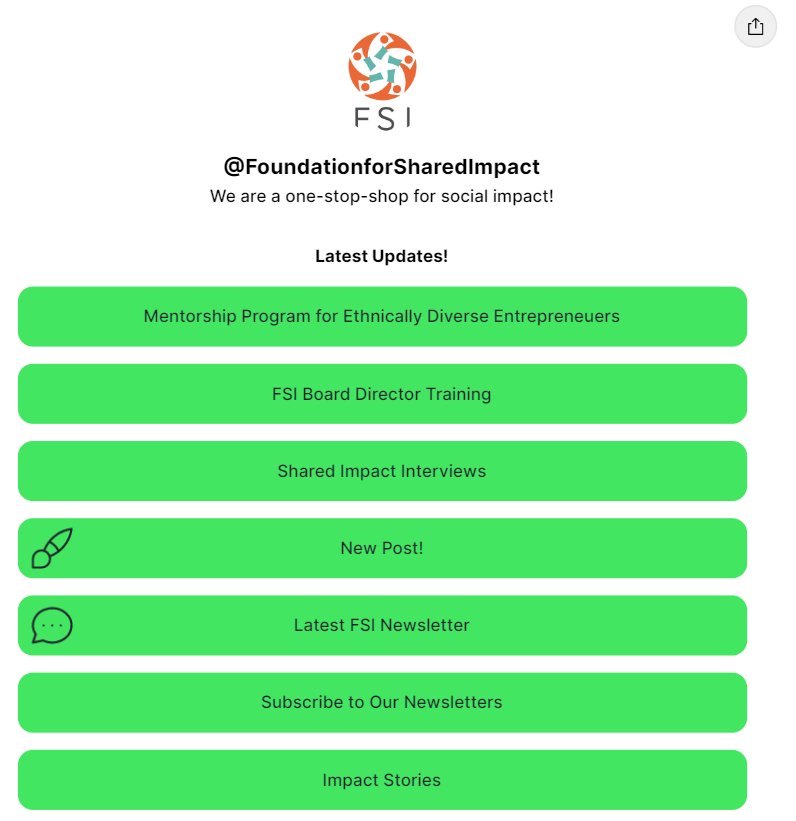
Tips for non-profit organizations and social enterprises.
If you are an eligible non-profit organization, you can enjoy the pro version of Linktree for free! Click to learn more about Linktree’s offer to charities.
- Make sure you highlight the most important destinations. What links you choose to include in your link in the bio landing page will depend on what you want it to achieve. For example, if you’re on Instagram or TikTok to drive sales, you’ll want to focus attention on your online storefront and the latest sale or giveaway.
- Put “link in bio” in your captions to get your links more exposure, and set clear titles for the bio’s landing page.
- Remember to delete the links that are no longer useful or valid! For example, if you previously added a link for registering for an event, make sure you maintain the links up to date to remove it after the event.
For more information on different linking tools and how they can help, check out the following blog: How to use the Instagram link in bio to drive traffic
Links in stories
Using the sticker function in Instagram stories, you can add links to engage your audience and redirect them to your desired destinations.
How to Add Links to Your Stories:
- Start by creating your Story, by capturing or uploading content to your story.
- Tap the sticker icon to access the tray of sticker options. You’ll see the link option at the bottom right corner as one of the stickers you can use (refer to the following example).
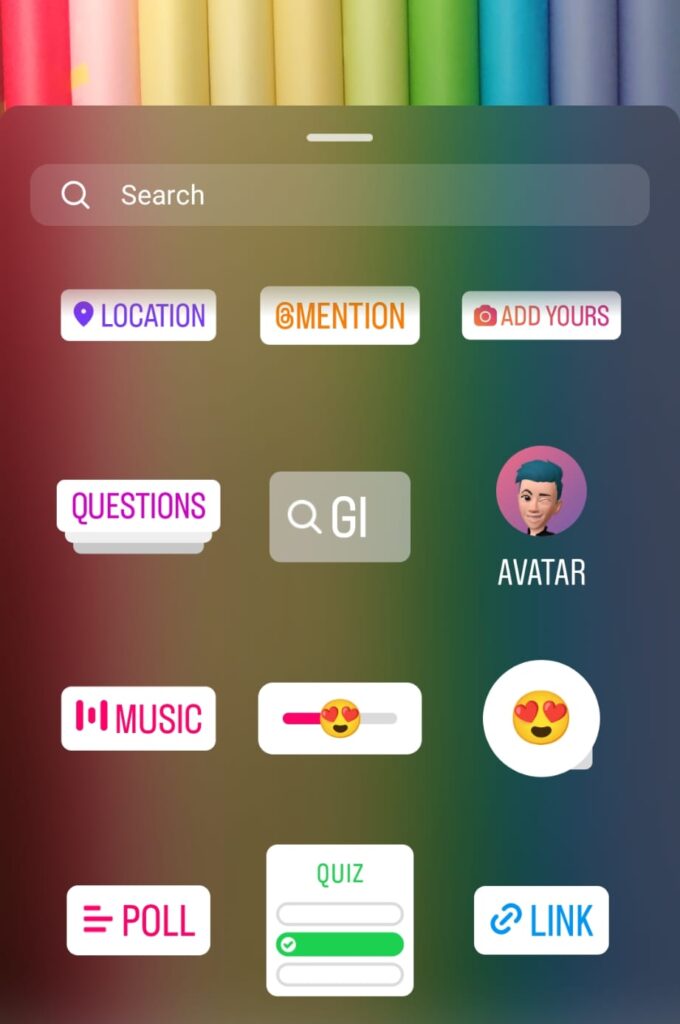
- Once you tap it, the window that allows you to add a link to your Story pops up. Add any URL to your website that you want.
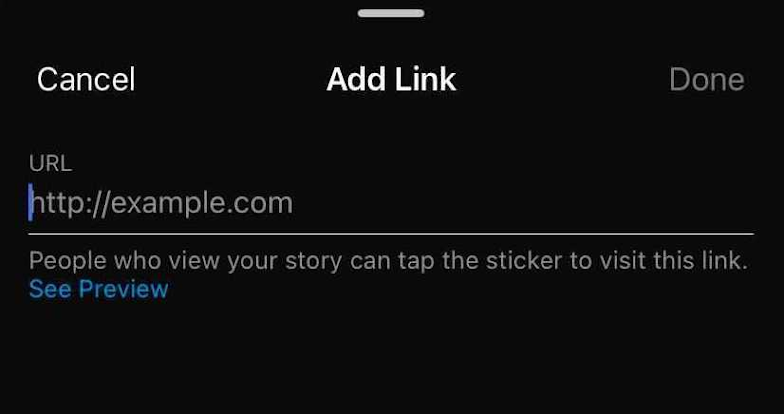
2. Hashtags
What is a Hashtag?
A hashtag is a combination of letters, numbers, or emojis preceded by the # symbol. Hashtags are clickable, and anyone who searches or clicks on a hashtag on Instagram will see a page showing all posts tagged with that hashtag. Thus, hashtags have become a very effective way for any users to search for content they are interested in.
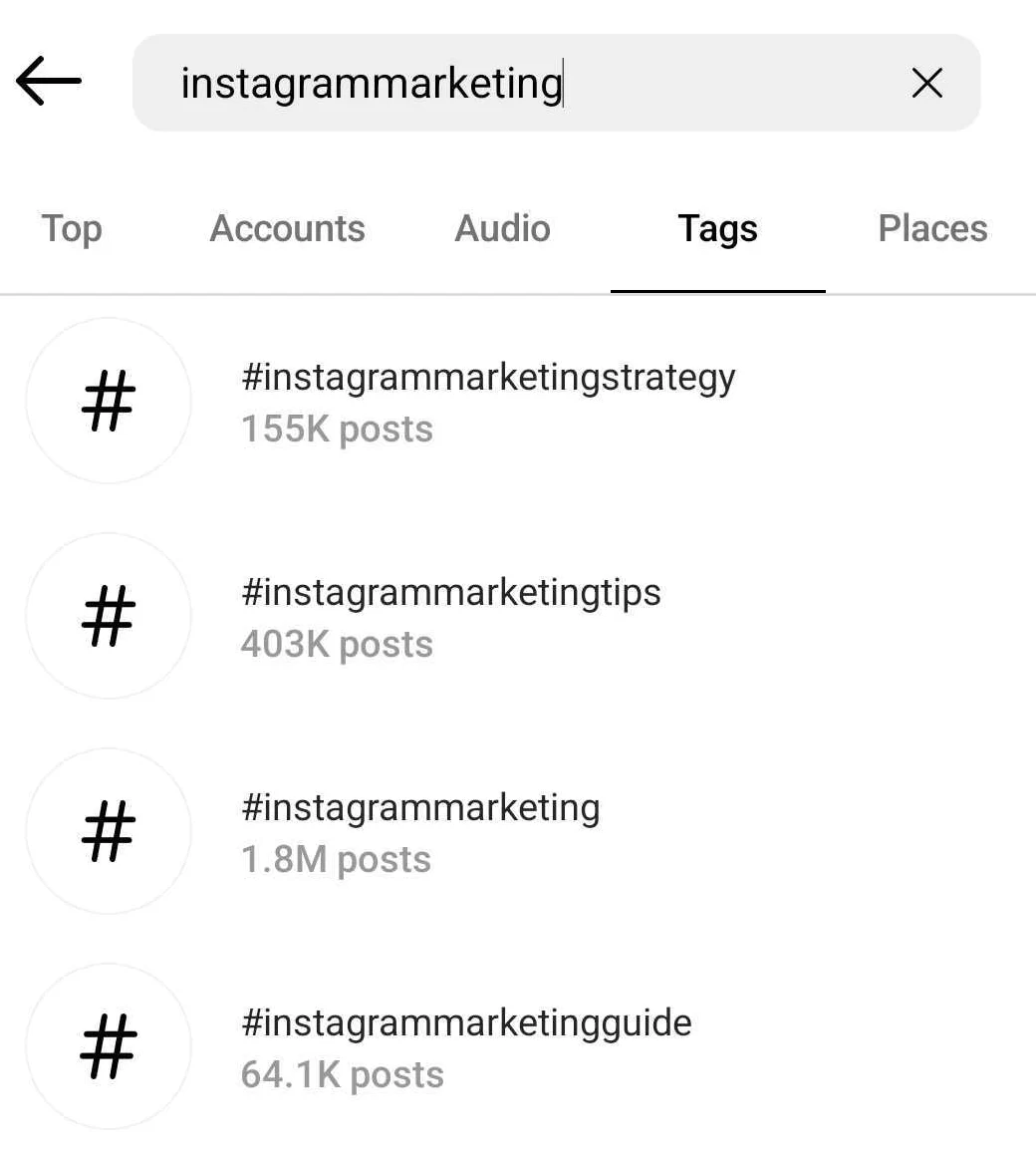
Why use Hashtags?
If you use hashtags well, they will funnel new audiences into your posts and accounts. Read this article by Instagram to understand more about how keywords and hashtags in post captions can significantly improve Instagram SEO (Search Engine Optimization).
Instagram SEO is the process of optimizing your Instagram content so that it can be better found in viewers’ search results. You can improve your SEO by effectively using hashtags, and below are our top 5 tips on how to properly and smartly use hashtags to drive more traffic!
5 Tips for Using Hashtags Effectively
- Use a combination of popular and niche hashtags! Using the most popular and commonly-used hashtags is not always the most effective method to drive traffic because there will be a lot of competing posts with the same hashtag, and your post will likely be lost amid the piles of posts. For instance, one of the most popular hashtags in Instagram is #love, used over 1.835 billion times; so using this hashtag only in your post will likely not help you greatly improve user engagement.
- Tips for non-profit organizations and social enterprises
If you are running a non-profit organization or a social enterprise, check out the Every Nonprofit Hashtag in One Big List to get a feel of the vast range of hashtags used by other non-profit organizations. Many social impact organizations elect to use common hashtags such as #impact, #donations, or #nonprofit. Given they are quite generic and unlikely to leave an impression, recommend you to combine them with some niche, specific and unique hashtags more tailored to your organization or its cause!
- Do not overtag! You can use add up to 30 hashtags on Instagram posts, and up to 10 on stories. However, using too many hashtags may look unnatural to followers, and they can rather distract readers from the main message of your post or leave a spammy impression. Although there is no set right number for any organization, market research indicates that posts containing somewhere between 5 and 12 hashtags often tend to generate the most engagement.
- Do not repeat your hashtags too much! Avoid repeating the same hashtags on your posts too much, as according to Instagram’s community guidelines, Instagram detects and penalizes accounts that continuously post repetitive and potentially spammy comments and content. We recommend you to use a different mix of hashtags according to the target audience, content, and purpose of your posts to build and retain viewers.
- To save time and effort in the tiring and time-consuming process of researching new hashtags, we recommend you to create your own hashtag bank, which you can refer to and pick the appropriate ones every time you need to post something.
- Place your hashtag on the right place. Placing your long list of hashtags in your caption can make your description look quite cluttered and text-heavy. One alternative for you is to add them to the comment section, not as a caption of the post. Here is an example from the charity Water for People of how this could look: View this post on Instagram
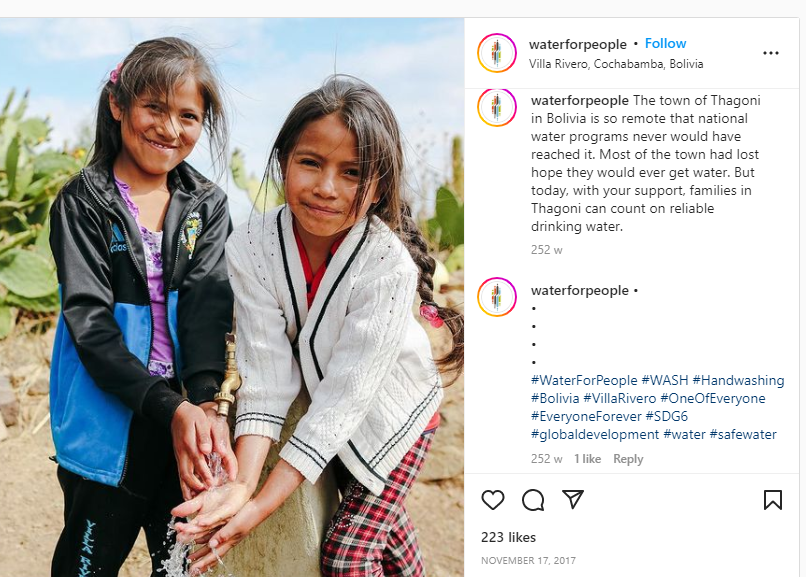
Another method to avoid visual clutter would be to place the hashtags at the end of your caption so that users will not see the hashtags unless they click to “see more”. See the example below!

- Create a brand hashtag. Create your unique hashtags to promote your organization’s name, brand, or campaign. Add your branded hashtags in your bio to as well to enhance the search results – note the below example of Lululemon where it asks their followers to share photos of themselves in their clothing using the hashtag #thesweatlife.

Tips for non-profit organizations and social enterprises
Non-profit organizations can adopt similar strategies to increase awareness – such as running competitions and promoting user-generated content. One notable example is Giving Tuesday, which started off as a viral hashtag, then became a global movement.
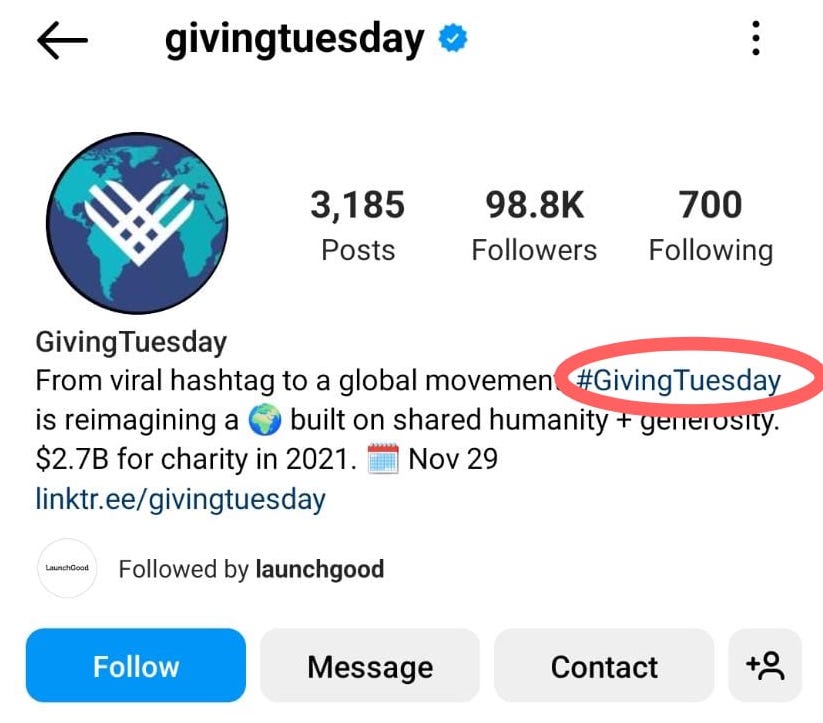
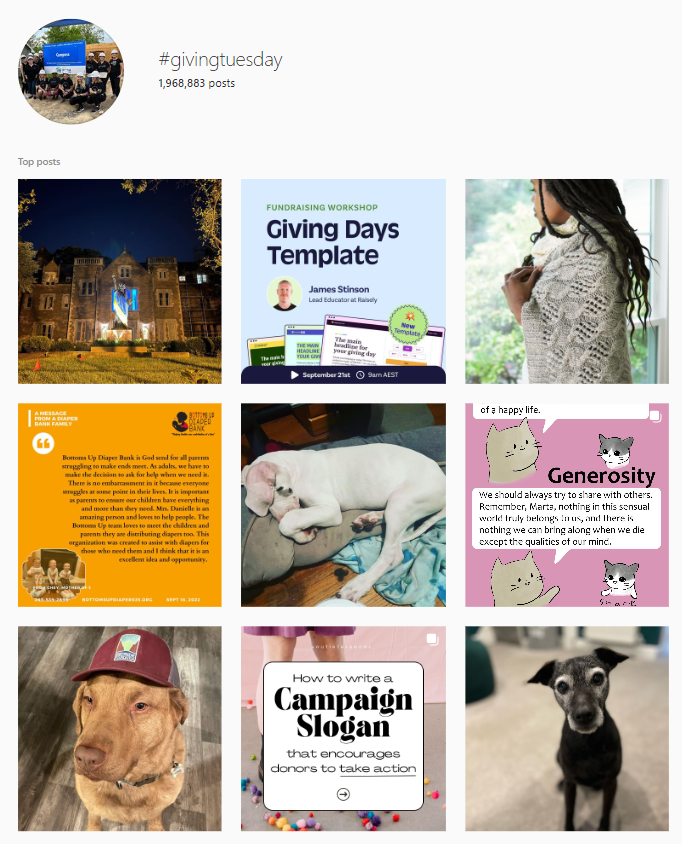
Source: GivingTuesday’s Instagram
Take a look at this blog for more on this: Guide on What is User-Generated Content? And Why is it Important?
Lastly, we also recommend you check out the Instagram Recommendations Guidelines to understand how Instagram recommends content to users. Contents that are not aligned with these guidelines will likely appear lower in search results or not appear in search at all.
3. Geotags
What is an Instagram Geotag?
An Instagram Geotag is the function to tag a specific location (using geographic coordinates) on your content. Geolocations are gathered from the physical location of your mobile device, which allows users to store or tag their content to those coordinates. This only applies if you have set your Instagram account to allow the disclosure of your location.
Why use Geotags?
Geotags are useful for targeting viewers in specific locations. It helps increase engagement on Instagram by pinning a location to a post so that your customers can find your content in the relevant locations.
Similar to how users can search using hashtags, users can click on a geotag to scroll through different contents with the same geotag – and that explains how posts with a tagged location usually result in around 79% higher engagement than posts without. Note that you can also add geotags to your Instagram Stories, which can be very handy for your audience to easily find your current location.
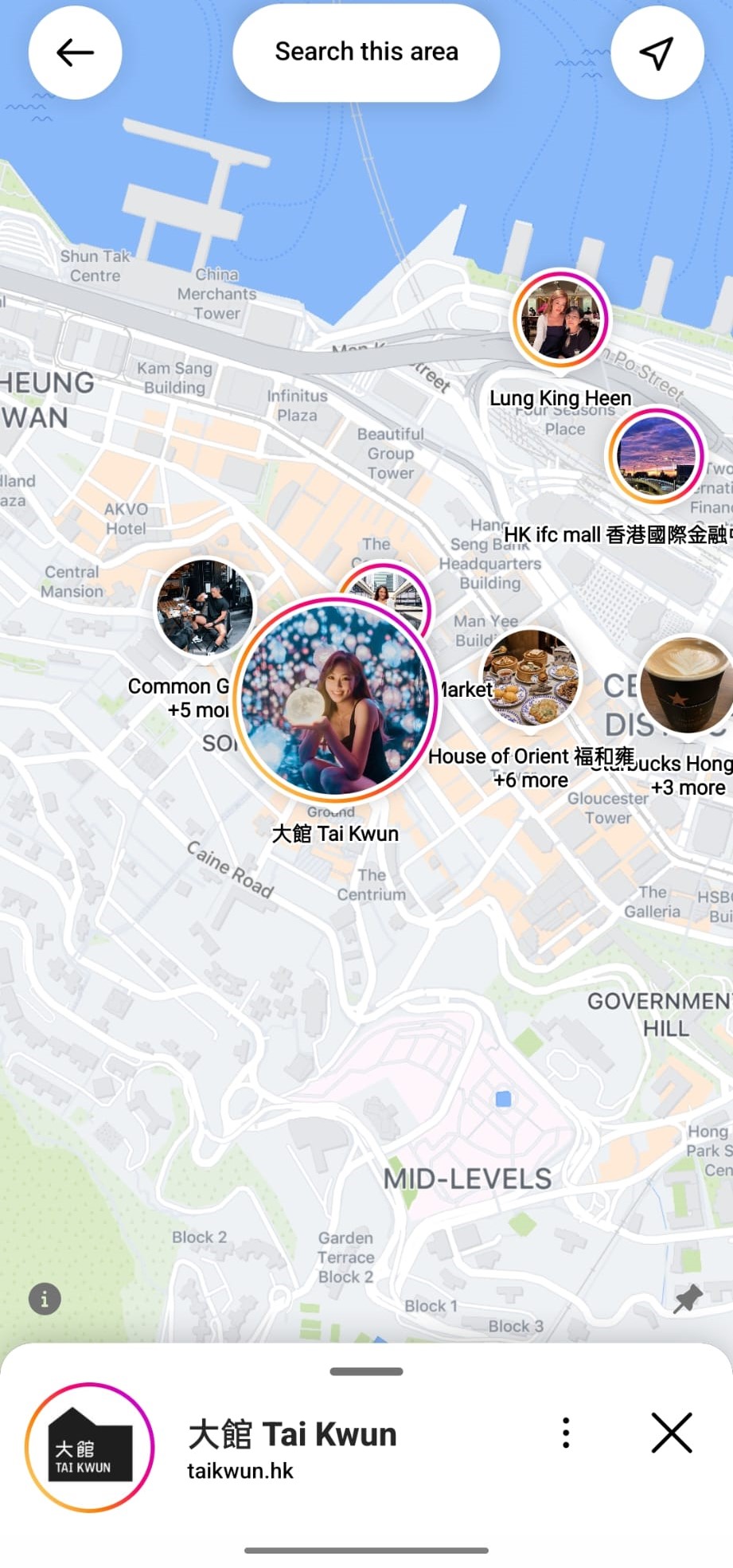
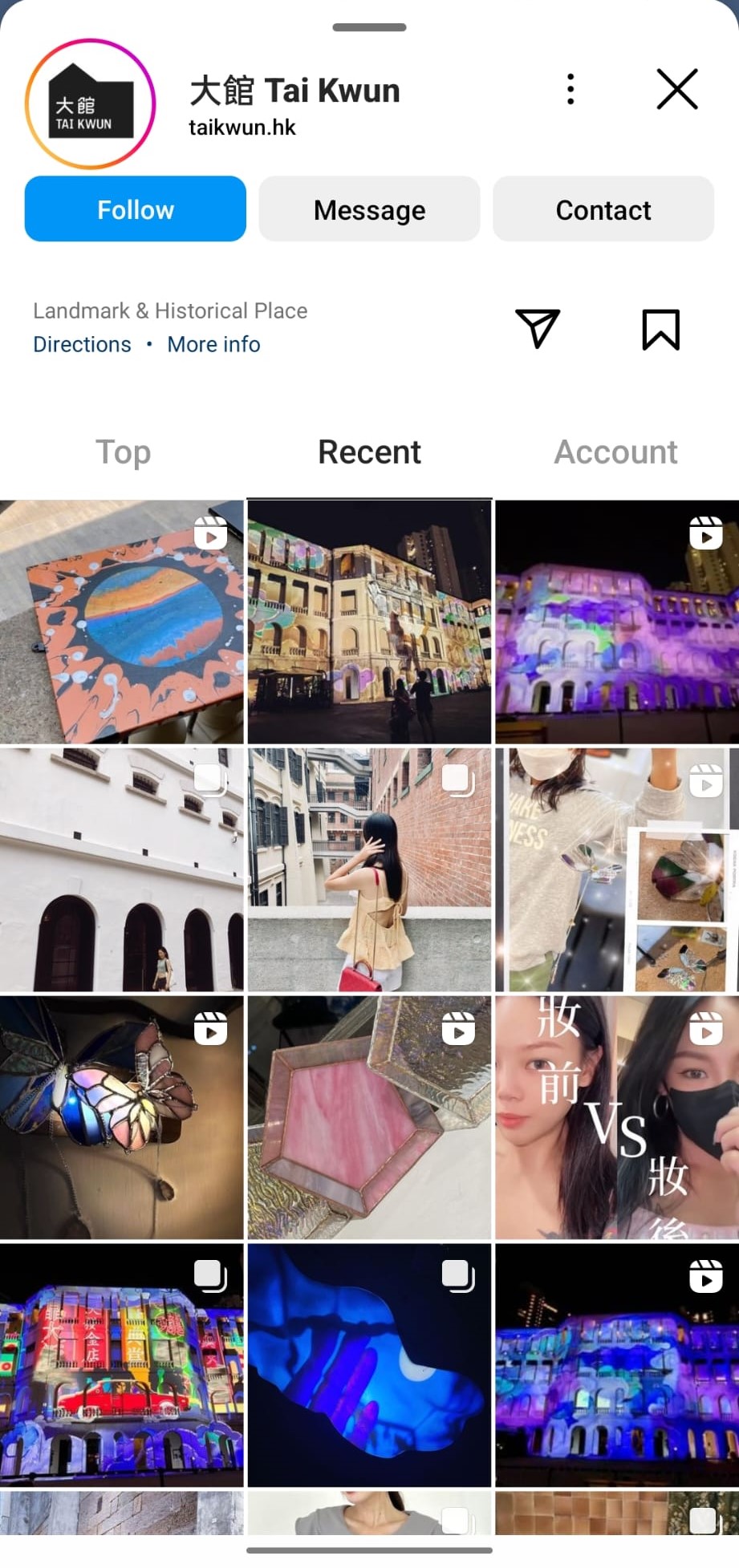
Tips for Using Geotags Effectively
For more tips and details, you should check out this guide from Sprout Social which further explains how to use geotags to connect with your target audience.
Tips for non-profit organizations and social enterprises
While geotags are useful to drive user traffic, because of the same reason we should also practice prudence to not over-tag places. For instance, when it comes to sensitive locations such as shelters for victims of human trafficking, and pristine nature spots vulnerable to over-tourism, we should be careful not to make the location ‘get viral’ and deviate from the original intent of your content!
4. Track your performance with Instagram Analytics
As you use hashtags, geotags, and links to engage your audience, it’s necessary to keep track of your account’s performance. You can easily analyze the performance of your account through Instagram’s in-built analytics tool – the Insights tab. Simply tap the Insights button on your profile page to access the tool.
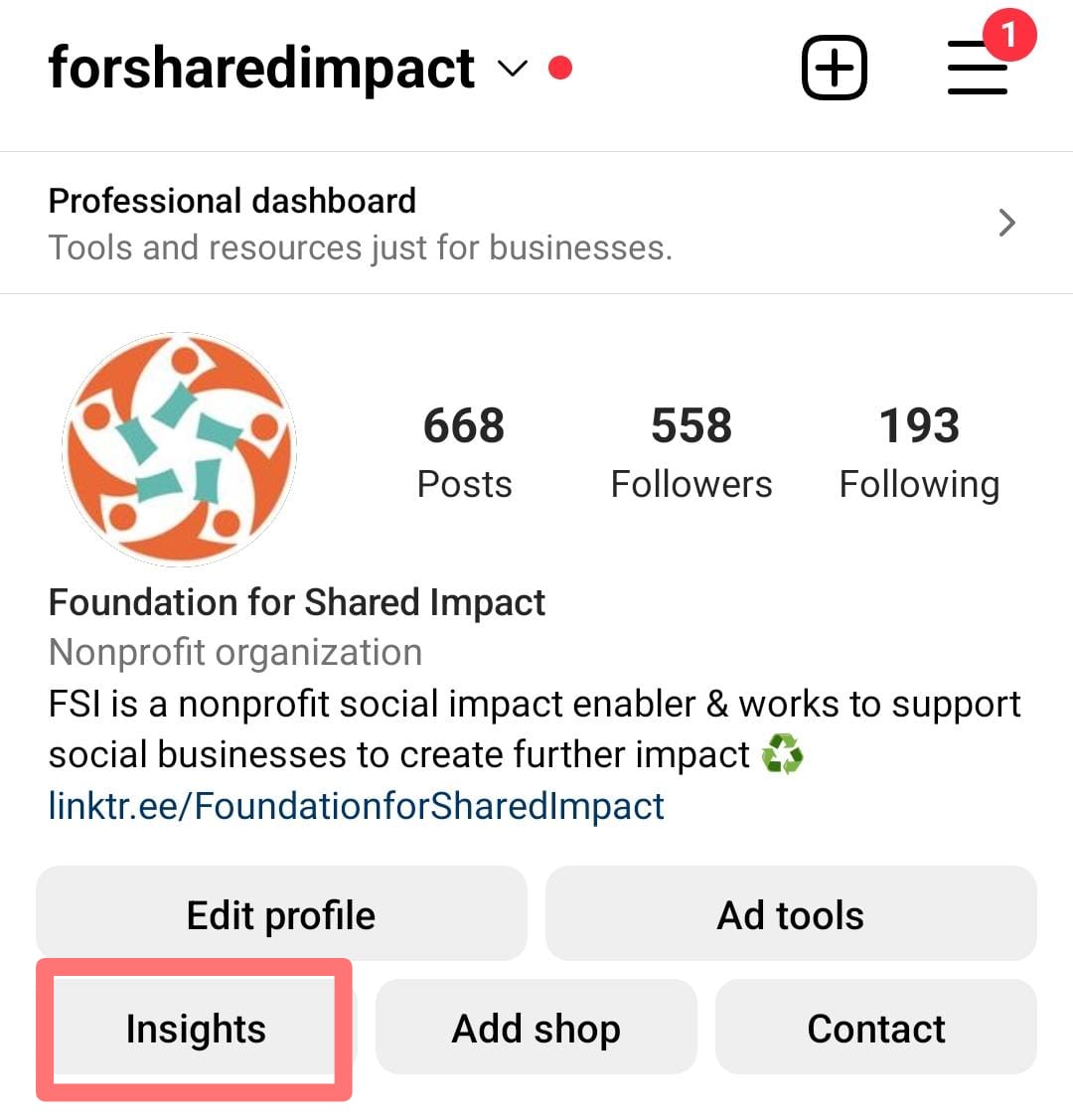
NOTE: Instagram can only show your analytics for posts and stories that were published after you switched to a business or creator profile.
That’s all we will cover in this guide! Please stay tuned for a more detailed guide on Instagram Analytics. Hope you found the information in this guide helpful.


